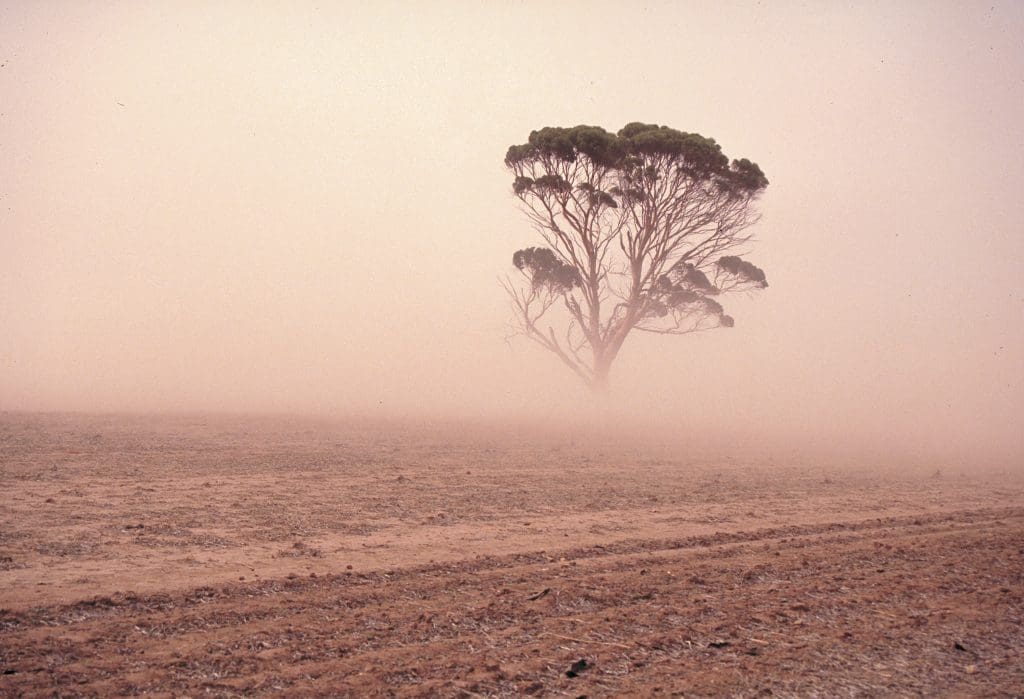Grain growers in areas affected by poor early season rainfall are urged to manage their harvest program carefully to reduce the risk of erosion in coming months.
WA Department of Primary Industries and Regional Development senior development officer David Bicknell said growers should employ strategies to ensure there was enough ground cover to reduce the risk of wind or water erosion.
“Delayed and reduced growing season rainfall has affected plant growth in many areas of the Grainbelt, which may have resulted in less stubble available after harvest to anchor the soil and provide protection from erosion through to the following season,” Mr Bicknell said.
“Growers have a number of options to ensure their paddocks have enough stubble to ensure the soils are stable and do not blow or flow away.”
Department research has identified that at least 50 per cent ground cover is required, regardless of soil type, to provide wind erosion protection through to the start of new season growth.
Mr Bicknell said the amount of dry matter required to achieve ground cover targets would depend on whether the paddock was to be grazed or not.
“Grazed stubble sown to pasture in autumn requires about 1500 kilograms of dry matter per hectare to anchored stubble after harvest, while full-cut seeding needs about 2250kg/ha and zero tillage about 1125kg/ha,” he said.
“Ungrazed stubbles to be sown to pasture in autumn require less dry matter with a target of about 1000Kg/ha, while full-cut seeding paddocks require about 1500kg/ha and zero tillage sites 750kg/ha.
“Where ground cover is not enough to reach these targets, great care is needed over summer and autumn to avoid disturbing the soil.”
The department recommends the use of controlled traffic or tramline farming for minimum tillage systems to reduce the risk of erosion.
“Any cultivation increases the risk of soil erosion, especially soil inversion methods, such as mouldboard ploughing, which can create a very high risk of erosion,” Mr Bicknell said.
A number of tactics are available to minimise soil disturbance activities over summer through to crop establishment in autumn.
“If growers choose to graze paddocks, it is important to remove livestock as soon as ground cover levels drop to 50 per cent or bare patches start to appear,” Mr Bicknell said.
“It also important to minimise the movement of vehicles in all paddocks and to protect bare areas, such as around gates and fence lines.
“The risk of summer weeds will also have to be assessed carefully and the need to control them balanced with the increased risk of erosion.”
Source: WADPIRD. The department recently updated its 2017 Growing Season Resources webpage to include further information on diagnosing and managing the risk of wind erosion, available from its homepage agric.wa.gov.au


HAVE YOUR SAY